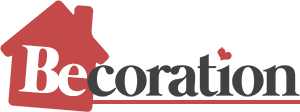Brutalist decor originates from Brutalist architecture, a style that emerged in the post-war 1950s. This era, marked by reconstruction days, demanded simple and enormous constructions. These structures, where building materials were exposed, sought functionality over decorative appearances.
Brutalist architecture, adapting to a challenging period, turned to the use of exposed concrete or brick. Unpainted and unaltered in appearance, it utilized large geometric shapes and extreme monochrome in terms of color. Employing steel, wood, and glass, it created “hard” looking spaces devoid of early 20th-century construction details. It distanced itself significantly from the ostentation and excess of unnecessary ornamental details.
This movement led to famous constructions that prioritized use over appearance, symbolizing an era and some social movements. Simple designs translated into functionality and economy. Enormous, functional, practical, and monochromatic spaces stood apart from those where appearance mattered more. Moreover, these constructions, it must be said, distanced themselves from bourgeois posturing because Brutalism is also political. A defined, direct, honest, and highly recognizable style.
This post isn’t delving into the long history of this architectural movement, which has birthed a new decorative style. A style that some may like and others not so much, challenging to achieve. A “controversial” style for some, due to its perceived lack of beauty and detail. Yet, it has proven its value over time and is resurging today.
Brutalism in today’s decor is trendy! A style with noted characteristics suits the demands of our current life. Brutalist decor, with its simple, minimalist, luminous aesthetic, is also sustainable.
We must now adapt our home decor to the demands of modern life. Making functional use of every area without sacrificing comfort but being more practical. This is where the minimalism of this decorative style comes into play.
Modern environments of concrete, glass, wood, and steel wonderfully showcase Brutalism’s qualities in decor. Remember, we live in economically challenging times, and a style that advocates for minimalism is ideal.
Long forgotten, mainly for recalling less vibrant days and because concrete became “gray,” “hard,” and “ugly” for new generations, Brutalism resurfaces. Its qualities align well with the sustainable, simple, and less ostentatious life our environment demands.
Extreme minimalism of Brutalist design might be hard but not impossible to achieve, and the result can be very satisfying. It’s repositioning as a trend as concrete regains popularity.
Consider its characteristics to apply Brutalist interior design in your home. Minimalism is a basic trait. Focus on choosing essential furniture and truly necessary decorative elements. A variety of minimalist furniture and those with curves can be chosen for integration.
Pieces in cast concrete accentuate the style, resorting to the most attractive organic shapes but importantly, left unpolished. Ideal within this avant-garde style. And don’t think it’s hard to find what you’re looking for; there are tables, decorative elements, and others made of stone that combine with steel or glass.
In decorative elements, sculptures stand out, as you might have noticed in decor stores. Also, craftsmanship elements.
Lighting is crucial, both natural and artificial. Ample space and large windows contribute to this, as do many proposals in cast concrete that will add elegance to the living room, entrance, or dining area.
As with any decorative style, this one also has its own color palette. Dominated by the tones of Brutalist architecture materials, grays and muted. In interior design, the sophisticated yet sometimes perceived as sad beige tone prevails. These can be “brightened” with more intense color tones from wood and clay, using decorative elements in these materials.
Color notes that we all love, adding warmth to spaces, can leverage textiles. For example, cushions in the living room, and handmade details like macramé add a relaxed and comfortable atmosphere.
Metals and their appeal are not excluded from Brutalist interior design. Combining decorative metal elements with concrete, exposed brick, and wood results in a very attractive decor.
It all comes down to Brutalist decor’s savvy use of combining curved, “heavy,” and geometric elements. Handmade textiles and designs with a touch of color. Plenty of light and “robust” furniture in environments of concrete, brick, or wood where also “breakthrough” elements like avant-garde artwork. A futuristic looking decorative element. The charm of a “vintage” detail.
These images of Brutalist decor will inspire you, and even if you don’t have a space of concrete, brick, or wood… this decorative style can shine in your home. Making it a comfortable and appealing space. Plus, leveraging sustainability qualities so important nowadays in decorating. And who doesn’t want to boast an avant-garde style at home?
Images: Unsplash












